101 Preschool Activities to Do At Home
Preschool Activities to do at Home by Janice Jones |Published 05-08-2020
Here are 101 preschool activities to do at home with your preschool-age child while sheltering at home during this Covid-19 crisis. I’ve also added a form you can use at the end of this page if you’d like to share photos and your own stories about what you are doing to weather these stressful times. Please don’t be shy about sharing. I’m sure your fellow parents will find your ideas and photos.
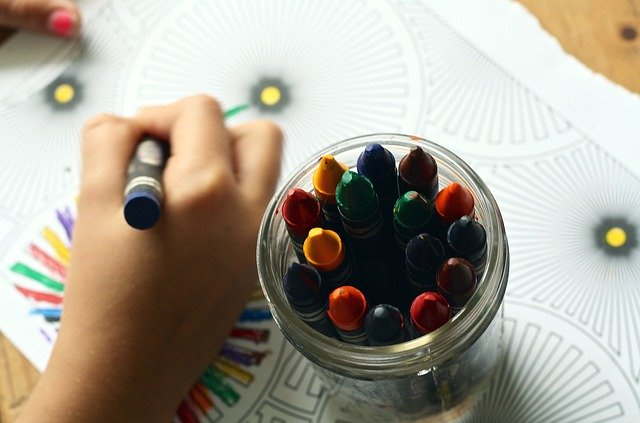 Preschool Activities to do at Home: Drawing improves creativity and eye-hand coordination
Preschool Activities to do at Home: Drawing improves creativity and eye-hand coordinationPlease note that all of these ideas may not be appropriate for all age groups. Please modify those that may seem to easy or too hard for your own child. Avoid any activities that require small objects which children under the age of 3. All of the activities are appropriate for preparing your child for either pre-k or kindergarten next year.
Preschool Activities to Do At Home
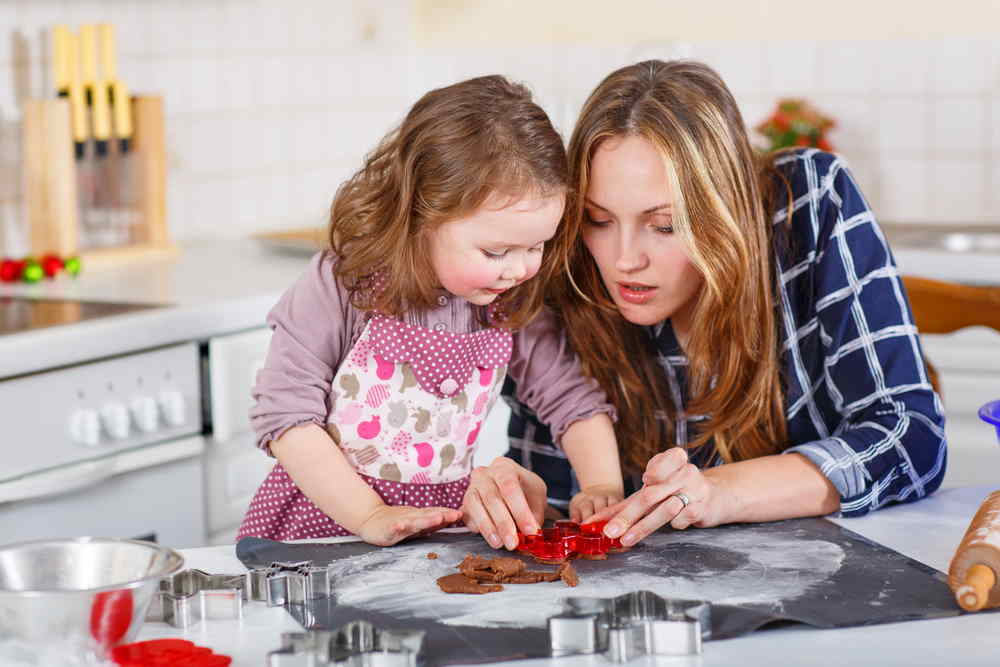 Cooking is an excellent preschool activity to do at home. Many skills are developed while baking including math, science, social skills, and literacy.
Cooking is an excellent preschool activity to do at home. Many skills are developed while baking including math, science, social skills, and literacy.1. Go on a Nature walk: Look for things that are alive such as leaves, plants, or other living objects. Find somethings that are not living (rocks, concrete, man-made objects)
2. Make sidewalk chalk: Detailed recipe and directions can be found here.
3. Make play dough: Find a recipe for simple dough here.
4. Create an obstacle course: Reinforce prepositions or teach them as your child maneuvers around the course. Teach, on, under, around through, above, below, etc.
5. Read a book to your child. Ask open-ended questions as you go along. See if your child can retell the story to you? Make story time a daily habit at your house.
6. Make a fort: Go inside and take turns telling stories, chanting rhymes, or singing songs. Does your child know any nursery rhymes?
7. Go on a scavenger hunt to search for shapes. Either inside or out, try to find objects that are circles, squares, rectangles, and triangles. What’s the difference between circles and spheres? Squares and cubes? Can you find any other shapes? What are their names?
8. Do yoga
9. ABC exercises (just sing your ABC’s while doing different exercises. Can also work with counting)
10. Bake cookies or cupcakes: Encourage your child to identify numbers in the recipe such as 2 (cups of flour)
Continue Reading more Preschool Activities to Do At Home
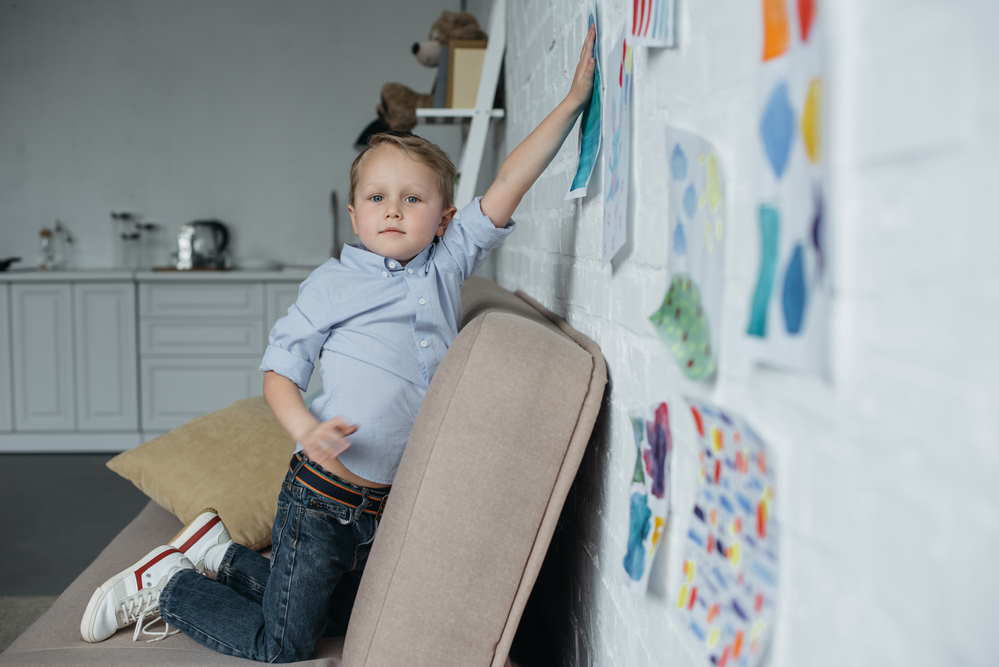 Having a place to display artwork is important for self-esteem. Preschool Activities to do at home.
Having a place to display artwork is important for self-esteem. Preschool Activities to do at home.11. Make sock puppets and put on a puppet show
12. Finger paint with shaving cream
13. Make sensory bottles: Assemble a supply of small containers with lids. Place a familiar scent in each jar, such as vanilla extract, banana, chocolate syrup, or anything familiar to the child. Have your child close their eyes and see if they can recognize the scent.
14. Hide letters in rice and have a letter hunt
15. Go around the house and count all the windows in your home. How many windows did you find? Write the number down for your child.
16. Can you write your name? For Pre-K children, this is an excellent activity for eye-hand coordination. Using a crayon, marker, or pencil, practice writing your name.
17. Do you know the days of the week? Practice saying or singing the days of the week. Each morning, remind your child what the day of the week is or ask them if they know. Check out this link for some inspiration.
18. Go on an ABC hunt inside your home? Can you find an object that starts with the sounds of the alphabet? Get a small box and collect objects that all start with different letters of the alphabet. For example, Find an apple in the refrigerator, a bottle top, a coffee cup, a dog (do you have a dog?) a fly swatter, a gate, a half ate cookie…
19. Make a memory game. Start with blank index cards cut in half. For a simple game, start with six cards cut in half to make a total of 12 cards. Draw the same design on two cards until you’ve finished all twelve cards. Turn all cards upside down. Take turns drawing two cards. If they match, keep the cards, if not, replace them. See who can make the most matches.
20. Take turns making up a story. Start with the ubiquitous, Once upon a time, and add a sentence. For example, Once upon a time, there was a beautiful four-year-old girl that lived in a castle. She had one brother… Let your child add the next sentence to the story. Take turns adding sentences until the story is finished. For older children, you may want to write down the story and then read it back to them.
Preschool Activities to Do At Home
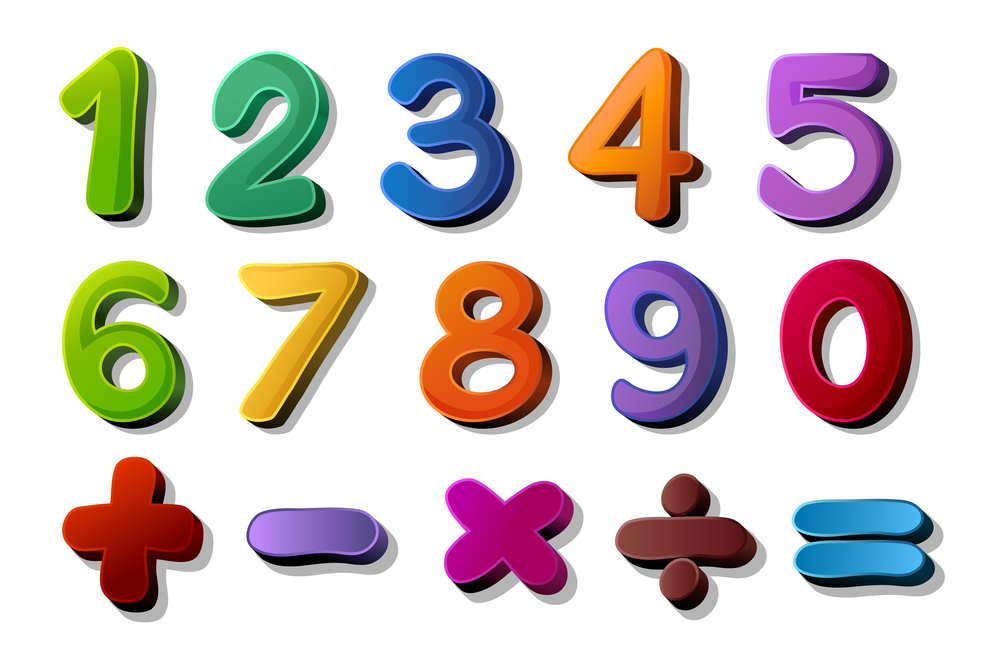 Math has always been a big component of preschool activities. There are many different math preschool activities to do at home with little or no equipment.
Math has always been a big component of preschool activities. There are many different math preschool activities to do at home with little or no equipment.21. Make sensory bags filled with familiar objects. Use old socks or bags and place an object in each sack. Have your child place their hand in the sack and try to identify the object without looking.
22. Draw a picture of yourself. Don’t forget to include eyes, nose, mouth, and other body parts such as arms, legs, feet, etc.
23. Identify body parts such as eyes, eyebrows, ear, wrist, ankle, etc. Younger children can identify things such as arms or legs.
24. Identify what floats and what doesn’t float. Fill a bucket with lukewarm water. Gather a group of objects of varying weights. First, discuss whether an object will float or not and then experiment with the objects. Which objects floated? Which didn’t?
25. Go on a color hunt. Either indoors or out, look for red objects? Blue? Green? Yellow? Continue to add colors if your child shows interest in the game. Increase the difficulty by adding some additional colors that might be new to your child? Tan, Magenta, Teal, etc.
26. Play how you are feeling: Ask your child to identify different facial expressions in terms of feeling terms. Show a happy face and see if your child can recognize happy. Similarly, show sad, angry, scared, worried, etc. Ask your child to make those faces so you can identify them.
27. Practice drawing shapes. For older children, encourage them to draw a circle, square, rectangle, and triangle. Tracing shapes is another excellent exercise in eye-hand coordination. Make shapes out of container tops. Most containers are either circles or boxes, but you can also recycle container tops and cut out triangle shapes for your child to use. What can you make with the shape? (Example use the circle shape to create a face, use the square or rectangle to build a house)
28. Dance to your favorite music: Crank up the music and dance to your favorite type of music. Play a different type of music you think your child has never heard before. Can she dance to that type of music?
29. Go on a numbers hunt. This is an excellent activity for an outdoor walk. Take a walk in your neighborhood looking for numbers. (Hint house numbers, speed limit signs, highway signs, etc.) See how many numbers you can find. Reinforce the difference between numbers and letters on your walk.
30. Does your preschooler know where he lives? Teach the name of his city, state, and country. He may not immediately understand the difference between Amarillo and Texas or the United States, but eventually, he’ll learn that he’s a part of a smaller community (Amarillo) that is part of a larger area (Texas) that is part of a big country (United States)
More Preschool Activities to Do at Home
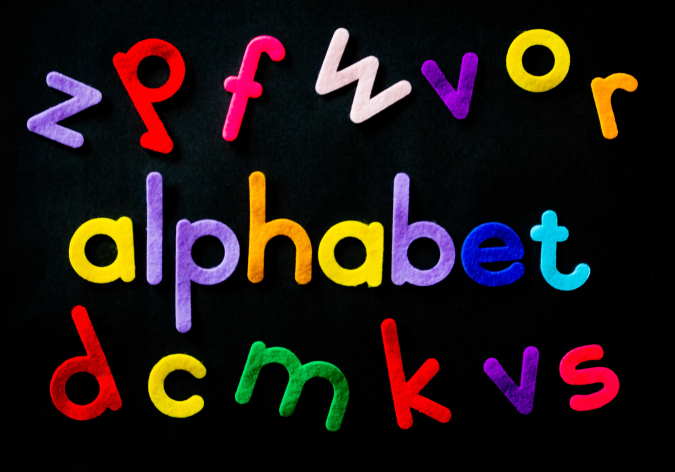 Preschool Activities to do at home should never avoid literacy and can incorporate alphabet games, letter sounds, and early reading activities.
Preschool Activities to do at home should never avoid literacy and can incorporate alphabet games, letter sounds, and early reading activities.31. The sounds of the alphabet: Each letter makes one or more sounds. Does your child know what sounds each letter makes? Start with the consonance and see if they can recognize each letter’s sounds. Talk about how vowels are different and have two different sounds.
32. Do you have pipe cleaners at your house? Turn them into letters of the alphabet
33. Do the Freeze Dance: Play dance movement for your child and then abruptly stop the music. When the music stops, the child must stop and remain in the same position that they were in when the music stopped. When the music starts again, the child can continue to dance.
34. Sort socks: Have your child help you sort socks. Throw all the socks in a pile and see if your child can find two socks that match. Continue until all of the socks have found their mates.
35. Make a collage with reusable objects. Gather an assortment of collage materials, fabric, cardboard, paper, plastic, wood, etc. Provide glue, crayons, markers, and scissors. Encourage your child to use the materials available to create a new masterpiece.
36. Make a sorting game. Use an ice cube tray and a variety of small objects such as paper clips, pennies, dimes, beans, tiny toys such as Lego, etc. Have your child sort like objects with like objects using the ice cube tray. This activity is not appropriate for children under 3 years old because of the risk of choking.
37. Make a melted crayon masterpiece: Remove the paper from old crayons and arrange them in a muffin tin in a single layer. Bake at 200 degrees for about 10 minutes. Let cool and stick them in the freezer to make it easier to pop out. Use the new melted crayons to create unique designs.
38. Gardening: Plant seeds or re-pot older plants. A great way to introduce children to gardening is through bean plants. They proliferate and can then be replanted and used to grow bean plants. Add them to your garden, and you may end up with enough beans for your family’s dinner table. Teach the importance of feeding and watering plants.
39. Water play is a popular project in preschools. Children play in water tables that include clean fresh water with a variety of household items such as measuring spoons, measuring cups, bottles, etc. Create that experience at home in your kitchen sink. Provide a small amount of water along with real kitchen utensils such as those listed above and any others deemed safe for a preschooler.
40. At Storyland, we’re not a big fan of worksheets, as you may have guessed. But, there are many on the internet that are free for download. A quick google search for preschool worksheets will bring up more than you or your child could ever want. I have a few free downloadable coloring pages on my other website if your child likes dogs.
Preschool Activities to Do At Home
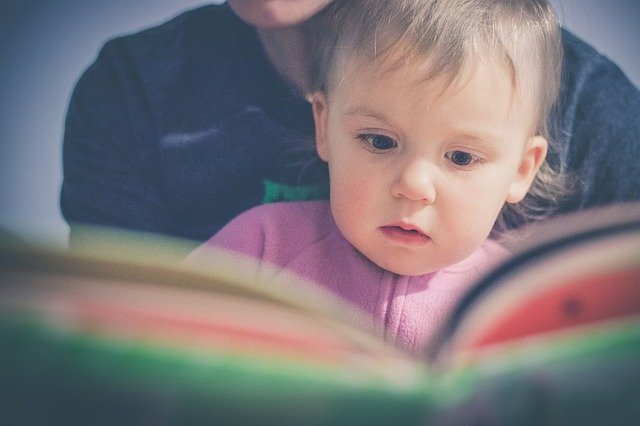 Preschool Activities to do at home would never be complete without daily reading aloud to your child.
Preschool Activities to do at home would never be complete without daily reading aloud to your child.41. Have your child dictate a book to you. Listen and write what you hear as your child tells you a story. Once done, either print it using a printer or write it down using suitable print formate and have your child illustrate each page. Bind the book and then re-read it to your child. Remember, children learn to read the print before cursive, so always use your memory of the printed word before cursive.
42. Have an indoor picnic or tea party. Encourage your child to help create the menu and any accessories. Play the part of the guest at your child’s tea party.
43. Create your own private bowling ally with empty toilet paper rolls and old mismatched socks. Collect empty toilet paper rolls. Gather old socks and wad up into small balls. Arrange toilet paper rolls like bowling pins and then try to knock them down using wadded up small sock balls.
44. Create a marble painting masterpiece. Do you have any marbles around the house? Use them to make an out of this world design. Cut out large round designs using paper or construction paper. Place in a baking dish. Add a small spoon of tempera paint and several marbles. Have your child rotate and wiggle the container to create lines and designs with the marble. Whey they are satisfied with the result, let it dry thoroughly before creating a solar system of discs created with the marble art.
45. Play I spy with colors, shapes, or alphabet letters. Start by saying I spy a…. and your child must look around the room to find the object that meets your description.
46. Do you have any magnets at your house? Turn those magnets into a fishing game. The fishing game can consist of anything you are interested in teaching your child. For example, cut out fish shapes and draw letters on each shape. Next, attach the magnet to a string that has been attached to a “fishing pole,” which would be a small dowel, pencil, or something similar. Add a paperclip to each fish and have your child go fishing for letters. Encourage them to identify the fish by the letter of the alphabet.
47. Make a Cheerio necklace. If you have a box of cheerios at your house, they make an excellent start for a necklace. All you need is a piece of yarn, and you’re off to make a delicious snack. Have your child string the cheerios onto the yarn, tie off and place on your child’s neck. When they get hungry, there is a ready-made snack right around their neck.
48. Outdoor Magnifying Glass Fun. Do you have a magnifying glass at your house? Why not put it to use exploring the great outdoors. Look at the ground, under rocks, and in the soil. What do you see? Explore tiny plants, insects, and worms through the use of a magnifying glass. Compare how they look through the human eye and the help of a magnifying glass.
49. Blow up a balloon and play catch or keep the balloon up in the air.
50. Practice bouncing a ball, throwing a ball, rolling a ball, catching a ball.
Preschool Activities to Do at Home
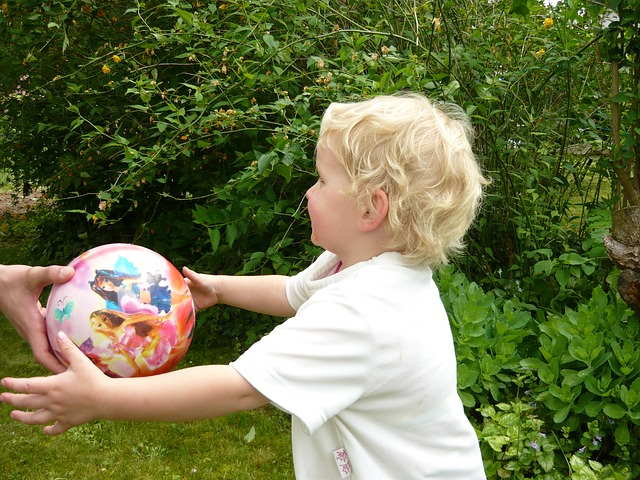 Active play, exercise, and gross motor skills go hand-in-hand when planning preschool activities to do at home.
Active play, exercise, and gross motor skills go hand-in-hand when planning preschool activities to do at home.51. Practice hopping on one foot, jumping on two feet, skipping galloping, running, and walking backward. Can you stand on one foot? Can you tippy-toe? Can you balance as you walk on a line on the concrete?
52. Make a collection of natural objects in your yard or a nearby neighborhood. (leaves, rocks, acorns, pine cones, etc.) Can you count how many you found?
53. Pretend to go on an imaginary trip. Have your child close his eyes as you guide them on an imaginary adventure. Perhaps you’ll go on an airplane trip or an African safari. Maybe you’d prefer to go by boat to the south pole or just visit someplace nearby like the local zoo. Create a virtual trip for your child as you guide him through the adventure. Encourage him to visualize the sights, sounds, and smells of your virtual tour. When it is over, gently bring him back to his own home.
54. Teach your child to sort coins. Provide an assortment of pennies, nickles, times, and quarters. Encourage them to sort them by type. More advanced students can learn to count using the coins. Start with pennies and go forward.
55. Play follow the leader. Take turns being the leader and do exactly what the leader does –walk, hop, jump run, etc. This activity can be done in one place or you can move around the house using different movements for even more exercise.
56. Have a windy day? (I know, that never happens in Amarillo) Go fly a kite with your child.
57. Make a paper bag puppet. Use lunch bags and construction paper to create a puppet. Any other small bits of collage materials such as felt, ribbon, rickrack, etc. all add to the fun. Once the puppets are made, put on a puppet show. Puppets are always a great prop to use when addressing difficult emotions such as missing friends, boredom, loneliness, anger.
58. Make a picnic lunch for you and your child either indoors or out. Layout out a blanket and serve food fit for a picnic right on your blanket. Sandwiches, finger foods, fruits, crackers and cheese, veggie sticks and simple drinks are all perfect picnic foods for a preschoolers
59. Play the rhyming game. Come up with a word and have your child come up with a word that rhymes with yours. For example, you say, cat and your preschooler say, bat. Take turns creating words that rhyme.
60. Scrubbing vegetables: Do you have a vegetable brush? Encourage your child to wash the vegetables you need to prepare dinner (example: potatoes, carrots, celery, etc.)
Preschool Activities to do at Home
 While many preschools do not fully comprehend their place in the world, breaking it down into manageable pieces make great preschool activities to do at home.
While many preschools do not fully comprehend their place in the world, breaking it down into manageable pieces make great preschool activities to do at home.61. Play Hot and Cold. Hide an object, and then as your child looks for it. Give clues of Hot or Cold as they search.
62. Play charades or Hide and Seek
63. Increase your child's vocabulary: Teachers use visual cues such as word walls to add new words to children's vocabularies. You can do this at home using chart paper or plain white computer paper. Decide on a theme such as words beginning with the letter B or different types of fruits, and print words for your child to see from that theme. Post where your child can see the words. A word and a picture help children remember the word more quickly.
64. Weather permitting place a blanket outside and lay down with your preschooler. Look up at the clouds. Imagine images you see in the clouds.
65. Draw pictures with sidewalk chalk
66. Blow bubbles and chase bubbles with commercially available bubble mix.
67. Make blueberry muffins or other kid pleasing snacks
68. Paint with watercolor paints
69. Create a quiet time box filled with activities your child can entertain themselves at times when you can’t be with them: Add paper and crayons or markers, puzzles, coloring books, favorite building toys such as legos, play dough, counting or sorting games, colored pencils, and drawing paper. Encourage your child to create something to share with you at a later time.
70. Encourage your child to help you set the table. (this is actually a great math activity that teaches a one on one association.)
Preschool Activities to do at Home
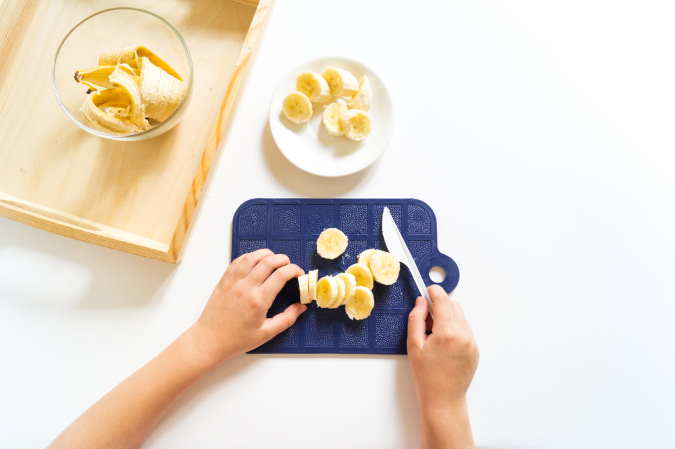 A great eye-hand coordination preschool activity to do at home can be borrowed from the Montessori tradition - slicing bananas.
A great eye-hand coordination preschool activity to do at home can be borrowed from the Montessori tradition - slicing bananas.71. Dictate a note to grandma or someone else who they have not seen recently. Encourage them to draw a picture to accompany the note.
72. Listen to an audiobook or view a child-appropriate TV show.
73. How many animals can you name? Which animals are typically found at the zoo or in the wild? Which animals are located on the farm? How many different types of pets can you name?
74. Chores may not go over big with some kids, but make them interesting, and you might spark their interest. Turn tasks into a science experience: What is easier: Use paper towels to scrub the floor versus using a rag or a mop? What is easier to use when dusting furniture? Experiment with different tools and let your child decide.
75. Make your own paintbrush: Use clothes pins and a variety of objects to find the best way to paint a picture: Add leaves, feathers, pine needles, string, cotton balls, and pipe cleaners to a clothes pins.
76. Take a neighborhood walk looking for signs (building signs, traffic signs, businesses, etc.). See how many your pre-k student can read. Or, while pointing to the sign, read it to your child. You might practice this activity in another week to see how many your child has remembered. (Called environmental print)
77. Slicing Fruit. Sharp knives might not be the best tools for pre-k aged children, but they can use a table knife or plastic knife to practice slicing bananas or canned fruit such as peaches or pares. Practice good hygiene. Always encourage them to wash their hands before handling food.
78. Scissor practice. Do you have child-size scissors at your house? Practice using them to cut out pictures from old magazines or newspapers. To make it more complicated for older students, have them find pictures of things that begin with various letters of the alphabet.
79. Self-help skills: Now is an excellent time to practice any of those skills that your child may be working on, such as zipping, buttoning, snapping, or tying a shoe. When they master a skill, snap a picture to help them remember how much they have grown.
80. How high can your child count? If you can find a collection of something, try practicing their counting skills. Have them count objects as they drop them in a bowl or box.
Preschool Activities to Do at Home
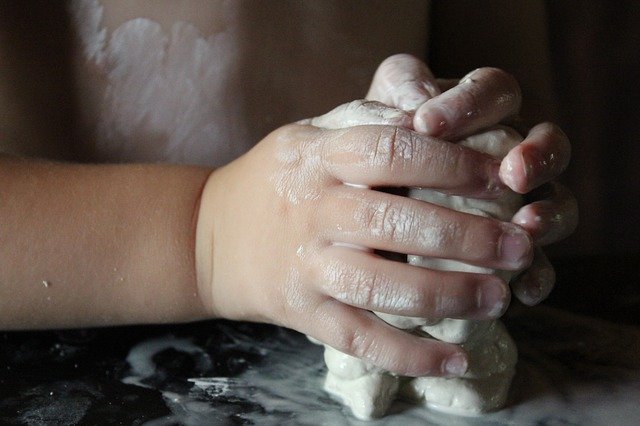 Don't underestimate the value of working with clay as one of many preschool activities to do at home.
Don't underestimate the value of working with clay as one of many preschool activities to do at home.81. Play catch with different types of balls. Younger children can practice rolling different sized balls.
82. Compare sizes: Small-Medium-Large: Gather objects that are either small in size, medium or large. Have your child find all the small objects, medium-sized objects, and large objects. Repeat with other comparison words such as long vs. short, little vs. big, tall vs. short, thick vs. thin
83. What’s for lunch? Using large letters that children can see well, write out a lunch menu. Point to each word as you read the list aloud to your child. Have him pretend to read it back to you.
84. Write your child’s name in large letters on a piece of paper. Provide crayons or markers and encourage him to decorate his name in any way he would like to do so.
85. Play a silly version of Follow the Leader. Give one silly instruction for your child to follow, such as walk to the TV and walk back. Continue to make it more challenging: Walk to the TV, touch the TV, walk back. Older children will be able to perform more complex tasks. See how many directions your child can remember and do.
86. Play 20 Questions
87. Can you draw a bigger fish? Draw a small object on a piece of paper and ask your child to draw the same object only larger. Repeat with other simple objects that you know your child can draw. Try doing the opposite. Draw a large object and have your child draw a smaller version of your object.
88. Play with clay. It requires much more finger strength than play dough and builds up those small muscles in the hands and fingers.
89. Practice labeling the parts of a book before you read the story (Cover, table of contents (if applicable) Title Page. Show your child where you begin to read by pointing to the first word on the page. Continue to read the page while moving your finger from left to right and then down the page. The next time you read a book, as your child to point to the place where you should begin to read.
90. If you have a computer or iPad, encourage your child to type out his name by finding the letters on the keypad. See if they can identify other letters on the keypad. If you do this on a computer, make the font is simple and large. You can try this on a smartphone too using a notes app, but the letters on the keypad will be smaller, and the type may be too small for a young child.
Preschool Activities to Do at Home
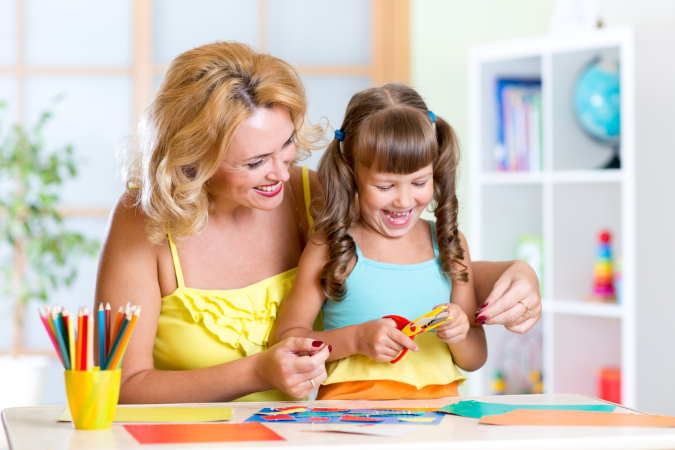 Young children find mastering scissor skills a very useful preschool activity to do at home, especially under the careful supervision of a loving parent.
Young children find mastering scissor skills a very useful preschool activity to do at home, especially under the careful supervision of a loving parent.91. Encourage your child to practice writing letters and sounding out simple words.
92. Let’s take some measurements: Find a ruler and show your child how you measure objects that are smaller than 12 inches. Encourage him to find an object to measure. Compare sizes. Which one is larger?
93. Take a virtual zoo trip: Go to the Amarillo Zoo homepage and explore the different types of animals virtually on your computer.
94. Digging for letters, archaeologist style. All you need for this game is some letters (such as magnetic letters) or make letters using cut-up index cards. Place them on a baking tray and cover with flour. Provide your child with an old makeup brush and show them how an archaeologist would look for buried bones. Do the same with the hidden letters. (This activity works great for numbers or other concepts, too)
95. Practice writing letters with a little help from some salt, a feather, or a Popsicle stick. Spread a thin layer of salt on a baking tray and have your child write letters in the salt using a feather or Popsicle stick. You can also substitute for other writing instruments such as fingers, stick from a tree or bush, handle of a spoon, or a plastic straw.
96. Draw a large maze with sidewalk chalk on your driveway or another safe outdoor area. Encourage your child to stay within the lines as maneuver around the maze
97. Create a visual daily schedule for your child. Discuss all things you do each day such as wake up, eat breakfast, do chores, do schoolwork, have a snack, play outdoors, eat lunch, take a nap, etc. Write down each activity on a separate index card. Add a picture to describe the activity either hand drawn or cut out of a magazine or find online. Arrange them in the correct order. Encourage your child to tell you what is next on the schedule. Encourage your child to read the cards. Hint, simple wording is easiest to understand for preschoolers. (Example, Snack, Lunch, Nap, etc.)
98. Do you know any familiar preschool songs to sing with your child? Older children can help you remember the words or contact your child’s teacher for some ideas.
99. What is your child’s favorite book? Reread it.
100. Curl up and watch a family friendly movie. Pick up on any new words in the movie that you think your child may not know. Talk about and define the new word. Use that word frequently in conversations for the next week or two.
101 How Many ways can you get from here to there? Start making a list of all the different types of transportation vehicles out there. Your child will probably know car, boat, train, airplane, but how many more words can you add to their vocabulary.
Recipes for Preschool Activities to Do At Home
Tried and True Play Dough Recipe
Tried and True Play Dough Recipe
2 Cups flour
1 teaspoon salt
4 teaspoon cream of tartar
2 Tablespoons vegetable oil
2 cups water
10-15 drops Food coloring or powdered tempera paint (optional)
2 teaspoons vanilla or peppermint extract (optional)
Mix all ingredients in saucepan. Cook over low heat until it just begins to look dry. Take out of pan and place on a cutting board or counter top. When cool enough to touch, knead until smooth and pliable. This playdough can last for months if covered in a tight container.
Homemade Bubble Solution
Soap Bubbles with Glycerin
1 Cup water
2 Tablespoon liquid detergent (hand soap such as Dawn dish washing detergent)
1 Tablespoon glycerin
1/2 teaspoon sugar
Mix all ingredients together in container with a lid. Shake well and blow some bubbles.
Glycerin is normally available in pharmacies or cake decorating sections of hobby shops. You can also purchase it online.
Old Fashioned Finger Paint
3 Tablespoons sugar
1/2 Cup cornstarch
2 Cup water (cold)
Food coloring
Dish detergent (helps in clean up especially when using food coloring)
Mix sugar and cornstarch together in a saucepan. Add cold water and stir completely. Cook over low heat, stirring constantly about 5 minutes. Cool, then separate into 4 cups or bowls. Add food coloring and a drop of detergent to each bowl. Keep in air tight containers for future needs.
Conclusion
These are just a sampling of the many skills that are typically taught in a preschool setting. I have tried to modify them to be used in the home with one-on-one help from a loving parent. Next it's your turn. I hope you will try one or more of these activities and share your experience with your fellow parents. We all learn from each other.
Preschool Activities to Do at Home
Have you done one of our Preschool Activities?
Do you have a great story about it to share? We'd love to hear how it went. Did you alter the activity, add to, or reduce its complexity to meet the special needs of your child? Please, do tell.